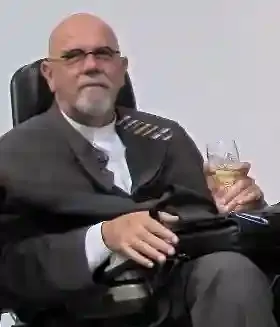Icons of Resilience: Seven Heroes Who Transformed History Despite Disability
Throughout history, many extraordinary individuals have risen above their disabilities to achieve greatness, leaving an indelible mark on the world. While their disabilities are part of their story, it’s their unique talents, resilience, and remarkable contributions to society that truly define them.
From renowned scientists like Stephen Hawking to influential activists such as Helen Keller, these individuals prove that greatness knows no boundaries, regardless of physical or mental limitations.
In honor of Disability History Month, we spotlight seven globally iconic figures who lived with disabilities, showcasing their achievements and how they transformed the course of history.
Seven Inspirational Figures Who Redefined Greatness
Stephen Hawking
Stephen Hawking is celebrated as one of the most brilliant theoretical physicists in history. Diagnosed with Amyotrophic Lateral Sclerosis (ALS) at the age of 21—a disease that gradually led to full paralysis—Hawking defied expectations and continued groundbreaking research for decades.
His pioneering work on black holes, the universe’s nature, and his best-selling book A Brief History of Time revolutionized our understanding of cosmology. Despite losing his ability to speak and move, he inspired scientists and laypeople alike with his profound insights into the universe’s mysteries.
Harriet Tubman
Born into slavery, Harriet Tubman emerged as one of the most iconic figures in American history—not for her disability, but for her extraordinary courage. After escaping slavery, she returned multiple times to rescue over 300 enslaved individuals through the Underground Railroad.
Tubman endured several disabilities, including a traumatic brain injury from an abusive master in her youth, which resulted in narcolepsy. She served as a nurse and spy during the Civil War and continued advocating for women's suffrage afterward. Her life exemplifies unyielding commitment to freedom, equality, and justice, transcending the immense challenges she faced.
Helen Keller
Helen Keller’s name is synonymous with overcoming adversity. At just 19 months old, she lost both her sight and hearing due to illness. Yet, with the support of her teacher Anne Sullivan, Keller learned to communicate, read, and write, eventually becoming the first deafblind person to earn a college degree.
Keller was a prolific author, an advocate for disability rights, and a champion of women’s rights, labor rights, and peace. Her accomplishments highlight the transformative power of education, determination, and a strong support system.
Louis Braille
Louis Braille’s invention of the Braille system forever changed the lives of millions of blind people worldwide. After losing his sight at the age of three due to an accident, Braille developed a tactile reading and writing system during his teenage years.
This innovative system revolutionized education and communication for the visually impaired, becoming the global standard for literacy among blind individuals. Today, Braille is used by over six million people worldwide, exemplifying how one person’s ingenuity can make a lasting global impact.
Frida Kahlo
Frida Kahlo, the renowned Mexican artist, delved deep into themes of identity, pain, and resilience through her art. A bus accident at the age of 18 left her with lifelong injuries and chronic pain, yet Kahlo used her suffering as fuel for her creativity.
Despite undergoing numerous surgeries, she produced over 140 iconic paintings, many of which explored her struggles and cultural identity. Kahlo’s distinctive style and feminist ideals have made her
an enduring icon, inspiring countless artists and activists.
Ludwig van Beethoven
One of the greatest composers of all time, Ludwig van Beethoven continued to create masterpieces even after losing his hearing in his late twenties. By the time he composed his legendary Ninth Symphony, Beethoven was almost entirely deaf.
His resilience and ability to adapt to his disability allowed him to compose works that have influenced music and culture for centuries. Beethoven’s genius proves that true artistry transcends physical limitations.
Chuck Close
Chuck Close, an American artist celebrated for his large-scale portraits, faced a life-altering spinal artery collapse in 1988 that left him paralyzed. Despite this, Close remained undeterred, developing innovative techniques to continue creating intricate, photorealistic art.
Using a wheelchair and adaptive tools, Close’s perseverance became a source of inspiration, breaking barriers for artists with disabilities. His work left an enduring legacy in the art world, proving that creativity thrives even in the face of adversity.
These extraordinary individuals remind us that disability is not a barrier to success or creativity—it is but one chapter in the stories of their remarkable lives that continue to inspire the world.

.webp)
.webp)
.webp)

.webp)

